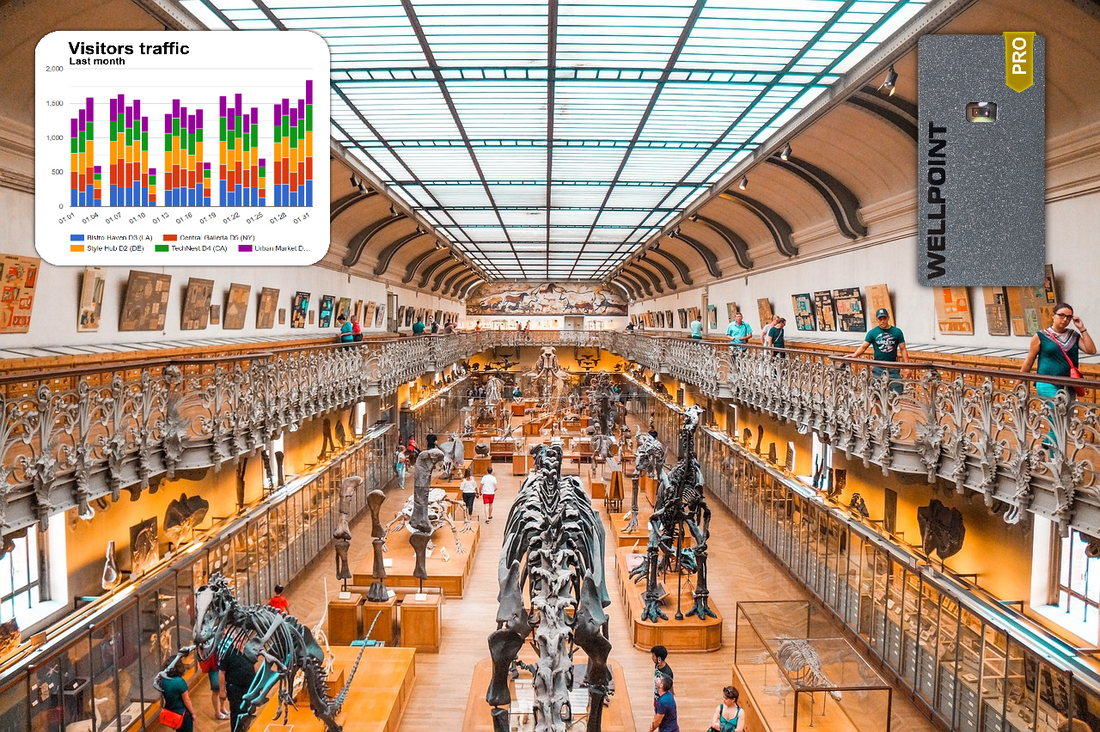
Art Meets Science: A Curator's Guide to Creating Exhibits with Visitor Data
For a curator, an exhibit is more than a collection of objects; it’s a carefully crafted narrative designed to educate, inspire, and provoke emotion. You rely on your deep knowledge and artistic intuition to tell a compelling story. But once the doors open, a crucial question remains: is the story being received as intended?
Historically, the answer has been based on observation and anecdotal feedback. Today, technology offers a more definitive approach. At Wellpoint, we believe that data, when used correctly, doesn't stifle creativity—it enhances it. By integrating visitor analytics into the curation process, you can gain a profound understanding of your audience and build exhibits that truly resonate.
1. Identify Your "Hero" Pieces and Hidden Gems
Every exhibit has its star attractions, but visitor data often reveals surprising insights. Dwell time analysis—measuring how long visitors spend in front of a particular piece—can confirm the popularity of your "Mona Lisa," but it can also highlight a lesser-known work that is unexpectedly captivating audiences. This data allows you to understand what truly piques visitor interest, helping you shine a brighter spotlight on hidden gems in future layouts.
2. Optimize the Narrative Flow and Visitor Path
You've designed a specific journey for visitors to take, but are they following it? Visitor flow analysis maps the actual paths people take through your gallery, showing you the most common routes, where they deviate, and where they might get lost or disengaged. If visitors are consistently skipping the intended midpoint of your narrative, it might indicate a need for clearer signage or a more compelling layout to guide them back to the story.
3. Test and Refine Exhibit Layouts with A/B Data
Making changes to an exhibit layout is often a significant undertaking. Visitor analytics allow you to test changes on a smaller scale and measure their impact. For example, you could move a single piece and measure whether it increases dwell time, or change the lighting on a specific display and see if it draws more traffic. This A/B testing approach lets you make iterative, data-backed improvements to your exhibit design, ensuring every change has a positive effect.
4. Create a More Comfortable and Accessible Experience
An unforgettable exhibit is also one that is comfortable to experience. Occupancy data can identify points of congestion where visitors may feel rushed or unable to get a good view. By understanding these pressure points, you can adjust the layout to improve flow, perhaps by increasing space around a popular piece or creating a secondary viewing area. This ensures that every visitor has the opportunity to connect with the art without feeling crowded.
Data as Your Co-Curator
The art of curation will always rely on human expertise and passion. But by embracing data, curators can add a powerful new dimension to their practice. It’s about listening to your visitors' unspoken feedback and using it to make your next exhibit even more powerful than the last.
Ready to see how data can inform your design? Try our interactive DEMO at wellpoint.cloud and discover insights that inspire.
#PeopleCounting #Wellpoint #Museums #Curation #VisitorExperience #ExhibitDesign
